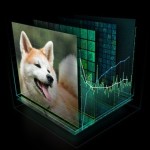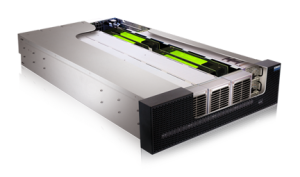Sponsored Post
Deep learning is a branch of machine learning that attempts to train computers to identify patterns and objects, in the same way humans do. For example, Google Brain, a deep learning research project at Google, is made up of a cluster of 16,000 computers. In 2012, Google Brain successfully trained itself to recognize a cat based on images taken from YouTube videos. This technology is already used in speech recognition, photo searches on Google+ and video recommendations on YouTube. Deep learning is used in the research community and may seem important to only a small percentage of the population; but deep learning also has an impact on the average person and will continue to do so as technology advances and techniques improve.
 While movies like The Terminator where cyborgs overtake the human race still seem far-fetched, some science fiction movies that feature subjects such as artificial intelligence and computers that are able to learn don’t seem quite as ludicrous anymore. Computers are starting to learn, albeit because they’re being programmed to do so. Skype, a program with over 300 million users world-wide is an example of how deep learning can impact the average user to improve their life, or in this case, improve communication across continents. In the beginning of October, Microsoft announced its real-time language translation tool would be built into the desktop version of Skype. While the technology has existed and been used over the past year, developers have been working tirelessly to make it better. It’s not perfect yet, but it’s getting better. As Jacob Demmit wrote in his article for GeekWire, “So Microsoft brought in a team of linguists to train the app to understand the nuances of speech, complete with slang. They installed a profanity filter and finally decided it has reached a point where it’s ready for mainstream users.” The linguists were responsible for teaching the computer application to train the app to act more human-like. Real-time voice translation is just one example of what can be achieved by using deep learning technology and techniques.
While movies like The Terminator where cyborgs overtake the human race still seem far-fetched, some science fiction movies that feature subjects such as artificial intelligence and computers that are able to learn don’t seem quite as ludicrous anymore. Computers are starting to learn, albeit because they’re being programmed to do so. Skype, a program with over 300 million users world-wide is an example of how deep learning can impact the average user to improve their life, or in this case, improve communication across continents. In the beginning of October, Microsoft announced its real-time language translation tool would be built into the desktop version of Skype. While the technology has existed and been used over the past year, developers have been working tirelessly to make it better. It’s not perfect yet, but it’s getting better. As Jacob Demmit wrote in his article for GeekWire, “So Microsoft brought in a team of linguists to train the app to understand the nuances of speech, complete with slang. They installed a profanity filter and finally decided it has reached a point where it’s ready for mainstream users.” The linguists were responsible for teaching the computer application to train the app to act more human-like. Real-time voice translation is just one example of what can be achieved by using deep learning technology and techniques.
Training the neural networks used in deep learning is an ideal task for GPUs because GPUs can perform many calculations at once (parallel calculations), meaning the training will take much less time than it used to take. More GPUs means more computational power so if a system has multiple GPUs, it can compute data much faster than a system with CPUs only, or a system with a CPU and a single GPU. One Stop System’s High Density Compute Accelerator is the densest GPU expansion system to date. In only 3U of rack space, the HDCA can add 16 NVIDIA K80 GPUs to one to four servers and provide up to 140 Tflops of compute power. This level of density can provide deep learning applications with incredible compute power and allow further advancements in the field.
This guest article was Katie (Garrison) Rivera, Marketing Communications at One Stop Systems






